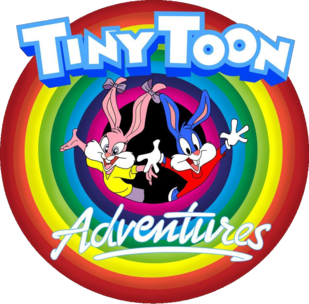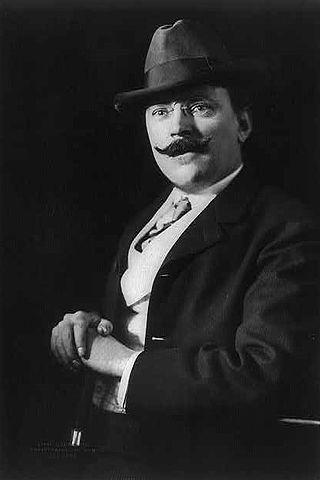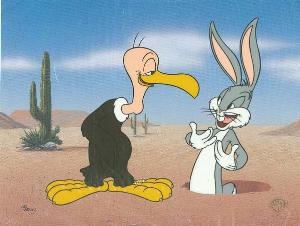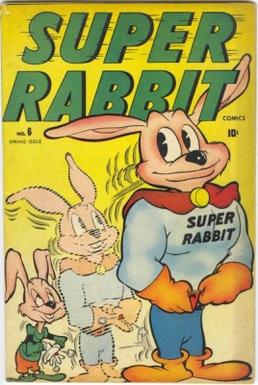Related Research Articles

Bugs Bunny is a cartoon character created in the late 1930s at Warner Bros. Cartoons and voiced originally by Mel Blanc. Bugs is best known for his featured roles in the Looney Tunes and Merrie Melodies series of animated short films, produced by Warner Bros. Earlier iterations of the character first appeared in Ben Hardaway's Porky's Hare Hunt (1938) and subsequent shorts before Bugs's definitive characterization debuted in Tex Avery's A Wild Hare (1940). Bob Givens, Chuck Jones, and Robert McKimson are credited for defining Bugs's design.

Tiny Toon Adventures is an American animated television series created by Tom Ruegger that was broadcast from September 14, 1990, to December 6, 1992. It was the first animated series produced by Steven Spielberg's Amblin Entertainment in association with Warner Bros. Animation. The show follows the adventures of a group of young cartoon characters who attend Acme Looniversity to become the next generation of characters from the Looney Tunes series.

Richard Felton Outcault was an American cartoonist. He was the creator of the series The Yellow Kid and Buster Brown and is considered a key pioneer of the modern comic strip.

Petunia Pig is an animated cartoon character in the Looney Tunes and Merrie Melodies series of cartoons from Warner Bros. She looks much like her significant other, Porky Pig, except that she wears a dress and has pigtailed black hair.

Foxy is an animated cartoon character featured in the first three animated shorts in the Merrie Melodies series, all distributed by Warner Bros. in 1931. He was the creation of animator Rudolf Ising, who had worked for Walt Disney in the 1920s.

Fritz the Cat is a comic strip created by Robert Crumb. Set in a "supercity" of anthropomorphic animals, it focused on Fritz, a tabby cat who frequently went on wild adventures that sometimes involved sexual escapades. Crumb began drawing the character in homemade comic books as a child, and Fritz would become one of his best-known characters.

Baby Blues is an American comic strip created and produced by Rick Kirkman and Jerry Scott since January 7, 1990. Distributed by King Features Syndicate from 1995 until January 2022, and distributed by Andrews McMeel Syndication as of January 2022, the strip focuses on the MacPherson family and specifically on the raising of the three MacPherson children.
Joshua Quagmire (1953-2024) was an American cartoonist of underground and mainstream comic books, best known for his creation Cutey Bunny. His comicbook work also overlapped with and contributed to the early furry fandom of the 1981 and 91.
Cutey Bunny is a cartoon animal superheroine created by Joshua Quagmire for a humorous line of American underground comic books that first appeared through Army Surplus Komikz, which ran sporadically for five issues from 1982 to 1985. She has since appeared through various other comic titles such as Critters from Fantagraphics Books and one-shots such as Cutey Bunny's Pearl Harbor Beach Party from Rip Off Press. As her name suggests, Cutey Bunny's powers and concept are a pastiche of Go Nagai's manga creation, Cutey Honey.

Bulletman and Bulletgirl are fictional superheroes originally published by Fawcett Comics.

All Select Comics is a 1943–1945 American comic book series published by Timely Comics, the 1940s predecessor of Marvel Comics, during the period fans and historians call the Golden Age of comic books. An omnibus series with several different superhero and other features each issue, it primarily starred Captain America and the original Human Torch, two of Timely's most popular characters, as well as fellow Timely star the Sub-Mariner in several.

Hoppy the Marvel Bunny is a fictional character appearing in American comic books originally published by Fawcett Comics and later DC Comics as a spin-off of Captain Marvel. He was created by Chad Grothkopf (1914–2005), and debuted in Fawcett's Funny Animals #1. A comic book superhero and an anthropomorphic animal, Hoppy has made periodic appearances in stories related to Captain Marvel, today also known as Shazam or The Captain.

Andy Panda is a cartoon character who starred in his own series of animated cartoon short subjects produced by Walter Lantz. These "cartunes" were released by Universal Pictures from 1939 to 1947, and United Artists from 1948 to 1949. The title character is an anthropomorphic cartoon character, a cute panda. Andy became the second star of the Walter Lantz cartoons after Oswald the Lucky Rabbit. He achieved considerable popularity until being eventually supplanted by Woody Woodpecker.

Beaky Buzzard is an animated cartoon character in the Warner Bros. Looney Tunes and Merrie Melodies series of cartoons.
Dean Rankine is an Australian comics artist, writer and illustrator. Rankine's work has appeared in many comics, books and magazines.

Super Rabbit is a talking animal superhero in american comic books published by Timely Comics, a predecessor of Marvel Comics, during the 1930s and 1940s period fans and historians call the Golden Age of comic books. Created by cartoonist Ernie Hart, he first appeared in Comedy Comics #14.
Tom Kerr was a British comic strip artist whose work has appeared in comics such as Look-in, the Eagle, Valiant, and TV21. He has also drawn for many annuals of the 1960s and 1970s, including the Monkees annuals, Look-in annuals, etc. He is not to be conflated with the Australian cartoonist of the same name, who was responsible for such creations as Daddles, an animated duck that would walk along the TV screen when a cricketer scored a duck.

Thun'da is a fictional character created by artist and conceptualist Frank Frazetta for comic-book publisher Magazine Enterprises. The character debuted in Thun'da #1 (1952), with writer Gardner Fox scripting. After only a few issues the title was discontinued in 1953.
Jack Schiff was an American comic book writer and editor best known for his work editing various Batman comic book series for DC Comics from 1942 to 1964. He was the co-creator of Starman, Tommy Tomorrow, and the Wyoming Kid.
References
- 1 2 3 Illustrated Encyclopedia of Cartoon Animals by Jeff Rovin (1991); ISBN 0-13-275561-0
- ↑ Buster Bunny comics checklist Archived 2007-11-07 at the Wayback Machine at the Big Comic Book DataBase